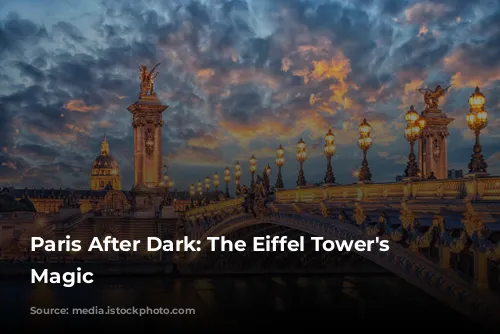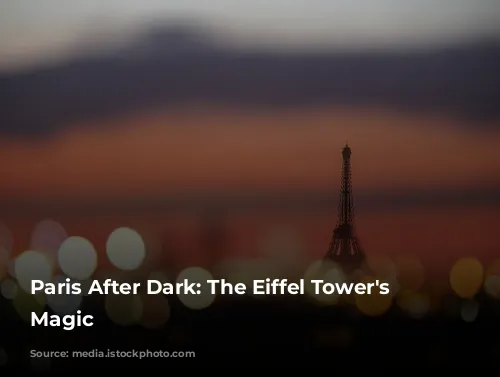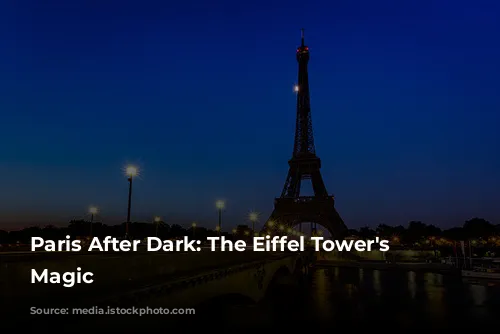Paris is renowned for its charm, but its beauty truly comes alive when night falls. While the city’s monuments and streets glow with a vibrant energy, the Eiffel Tower takes center stage, captivating visitors with its brilliance. Join us as we delve into the secrets of this iconic landmark under the Parisian sky.
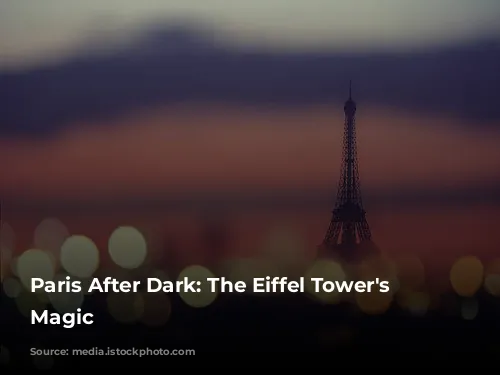
The Sparkle and Lighting of the Iron Lady
From the moment Gustave Eiffel unveiled his masterpiece at the 1889 Universal Exhibition, the Eiffel Tower has been adorned with stunning lighting. Today, its nightly glow is a breathtaking spectacle.
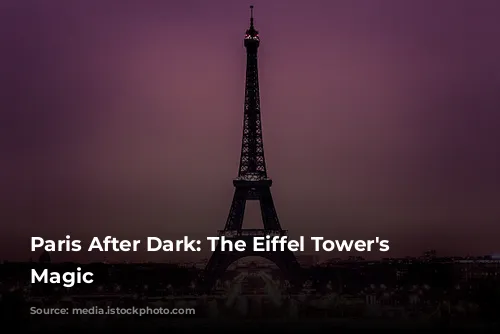
Lighting Evolution: From Gas to Electricity
The tower’s initial illumination relied on external gas-powered projectors. For the grand opening, over 10,000 gas burners illuminated the Iron Lady, creating a dramatic scene.
A decade later, electricity took over, and over 5,000 light bulbs were integrated directly into the tower’s metal structure. This change not only improved nighttime accessibility but also highlighted the tower’s elegant design. Since then, special lighting displays have been used to celebrate numerous events.

A Golden Glow and Sparkling Symphony
In 1985, the Eiffel Tower received a major makeover, including a stunning golden lighting scheme. Then, in 2000, the tower was equipped with a new lighthouse and its signature sparkle effect. While initially intended as a temporary feature, the sparkle has become a beloved Parisian tradition.
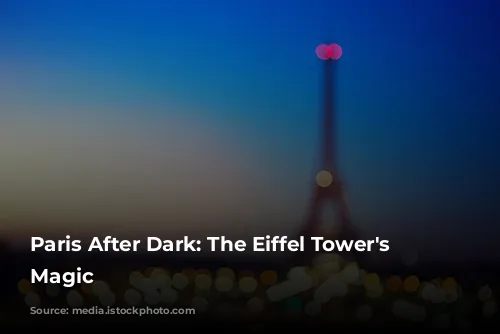
Timing is Key: The Eiffel Tower’s Lighting Schedule
To fully appreciate the Eiffel Tower‘s nightly spectacle, understanding its lighting schedule is key.
The golden lighting activates at dusk, triggered by light sensors. Every hour, the tower bursts into a five-minute dazzling display of light.
For example, if the sun sets at 8:20 p.m., the tower will glow golden yellow within the following 10 minutes, and the first sparkle will occur at 9 p.m.
The tower’s lighthouse also illuminates at dusk, starting to rotate in unison with the lighting.
As part of Paris’ energy-saving initiatives, all lighting is switched off at 11:45 p.m., with the last sparkle happening at 11 p.m.
During summer months, the Eiffel Tower remains open until 12:45 a.m. Lighting and the lighthouse are switched off at 1 a.m., leaving only the final sparkle for 5 minutes.
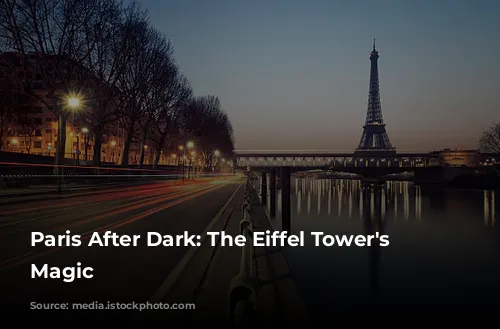
Energy Efficiency: A Shining Example
The Eiffel Tower‘s energy consumption has been a concern in recent years. In 2004, the power of the 336 projectors was reduced by 40%, saving 4% of the tower’s total energy usage.
In 2008, the duration of the sparkle was reduced from 10 to 5 minutes to lessen the tower’s ecological footprint. Although the 20,000 xenon bulbs consume a significant amount of energy, they account for only 0.4% of the tower’s overall energy costs. With the implementation of energy-saving measures, these figures have continued to decrease.
Since 2016, the Eiffel Tower’s lighting efficiency has improved, with an average annual energy reduction of 9%.
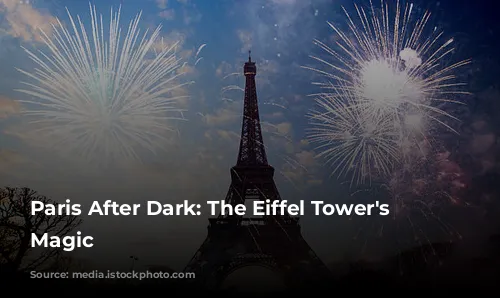
The Eiffel Tower Lighthouse: A Guiding Light Through History
Since its construction, the Eiffel Tower has featured a lighthouse at its summit. Initially, it was intended to illuminate key Paris landmarks such as the Arc de Triomphe, Opéra Garnier, and Louvre Museum. In 1947, the lighthouse began serving as an aid for aerial navigation. Today, it stands as a universal symbol.
The tower’s current lighthouse, unveiled in 2000, consists of two electrical harnesses capable of projecting light up to 80 km.
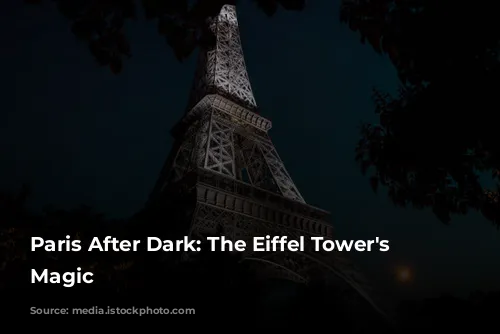
A Nighttime Experience to Remember
The Eiffel Tower offers a unique nighttime experience, allowing visitors to enjoy the magic of Paris after dark.
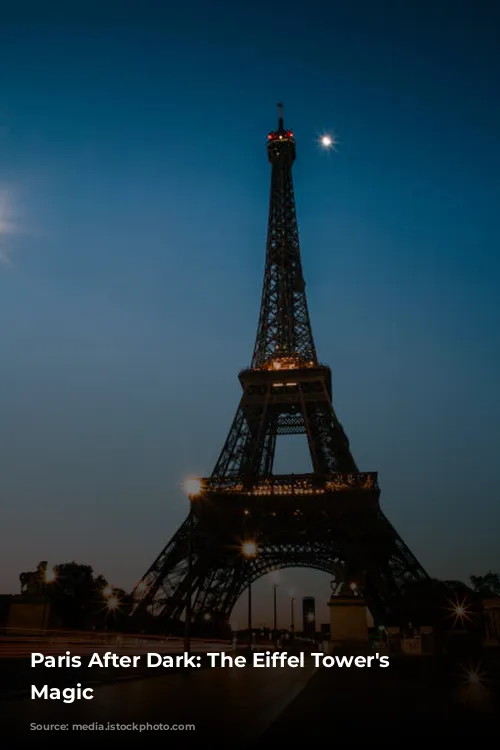
Visiting the Eiffel Tower at Night: A Guide to Making the Most of It
As the sun dips below the horizon, the Eiffel Tower transforms, bathed in a warm golden glow. Visitors can explore the tower as they would during the day, but taking the stairs is highly recommended. The illuminated structure creates an intimate and enchanting atmosphere.
If you’re fortunate enough to visit at dusk, head to the top floor and indulge in a glass of champagne at the champagne bar while enjoying the breathtaking sunset. For a romantic dinner with a view of the city lights, reserve a table at Madame Brasserie on the first floor or at the Michelin-starred Jules Verne restaurant on the second floor.
To witness the full glory of the tower’s sparkle, arrive shortly after dark. The second floor offers an ideal vantage point, placing you in the heart of the shimmering light display.
If you’re eager to enjoy stunning views of Paris or witness the lighthouse in action, venture to the tower’s summit.
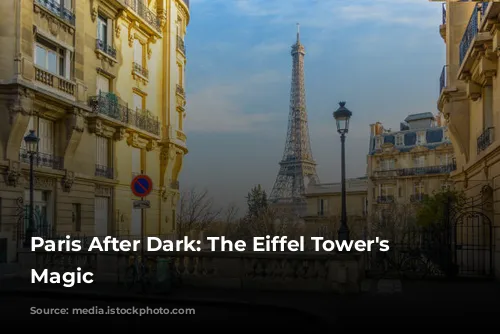
Capturing the Magic: Photography and Filming
Want to capture the memory of this magical evening? Feel free to photograph or film the Eiffel Tower’s nighttime illumination. Share your memories on social media!
However, professional photographers and filmmakers should note that the tower’s lighting and sparkle are copyrighted. To use images of the tower for commercial purposes, you’ll need to obtain permission from the Société d’Exploitation de la Tour Eiffel.
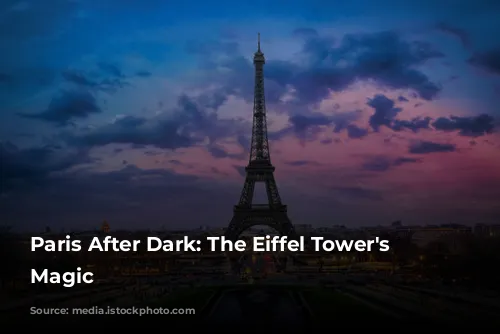
Two Distinct Experiences: Day and Night
Visiting the Eiffel Tower by day or night offers entirely different experiences. The golden glow of the tower’s nighttime illumination creates a magical and unforgettable ambiance.
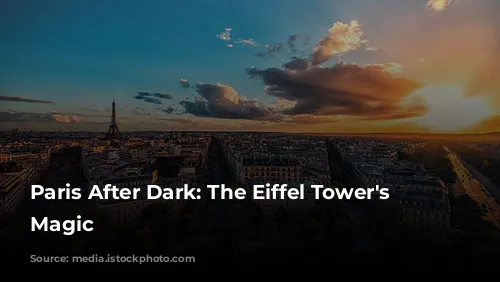
Discover More About the Eiffel Tower’s Rich History
The Eiffel Tower is not only a stunning architectural marvel but also a testament to engineering innovation and a symbol of Parisian culture. For a deeper dive into the tower’s history, visit our website to explore its past, present, and future.
